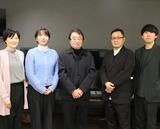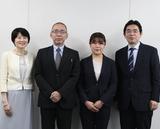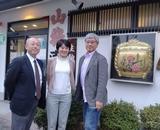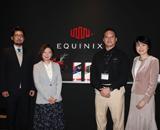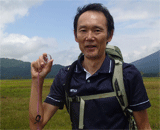September 2022
Risk Management in Uncertain Environments: A Discussion With Professor Murakoshi From Shizuoka University
Professor Shin Murakoshi began competing in orienteering at age 14 and has won the Japan Orienteering Championships 22 times, entered the World Orienteering Championships 13 times, and became the Asia Pacific Orienteering Champion twice. He grew interested in psychology through the sport and is currently conducting research in cognitive psychology in the Faculty of Education at Shizuoka University. As a top orienteer, he is researching the psychological mechanisms of navigation, while also striving to spread risk management thinking in outdoor activities and school education, where the concept has been little known until now, with a focus on how people recognize and handle risk.
According to Professor Murakoshi, being aware of uncertainties, and being able to imagine those uncertainties, are crucial to both individual and corporate risk management. In this interview, we asked about cognitive psychology and risk management based on Professor Murakoshi's actual experiences--including his encounter with a bear!
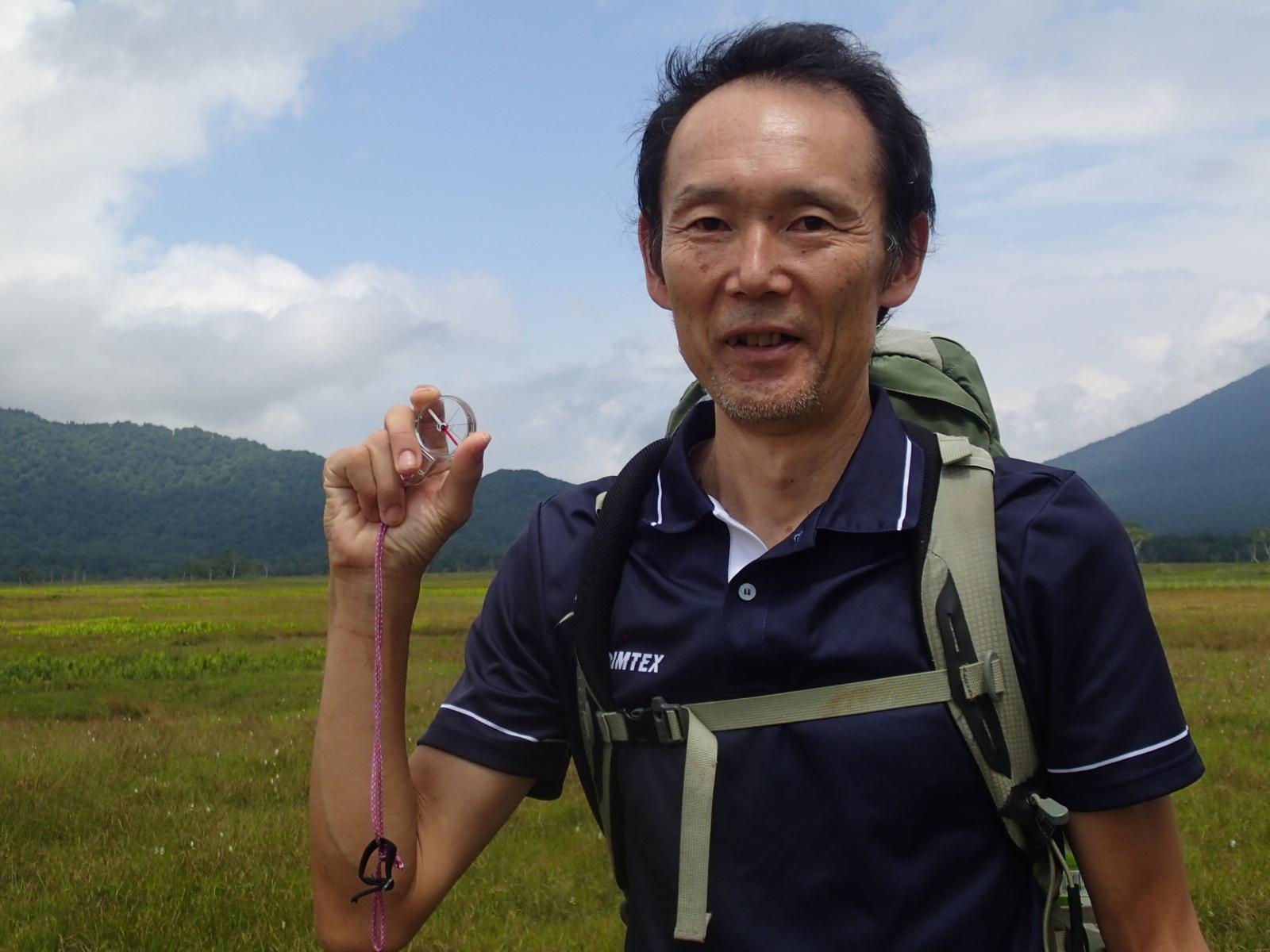
- Profile
- Shin Murakoshi: Professor, Faculty of Education, Shizuoka University, and Executive Officer, Japan Orienteering Association
- Mariko Ohsato: CEO & President, Arc Communications Inc.
- Mizue Ito: Project Manager, Translation & Localization Division, Arc Communications Inc.
From Orienteering to Cognitive Psychology
Ohsato: Firstly, to introduce our readers to you, could you talk about your research at university and a little about yourself?
Murakoshi: As a student, I studied engineering at university and majored in urban planning through to my master's degree in graduate school. I was already competing in the orienteering sport back then and I started noticing things that interested me. For example, I could read a map, but some other athletes couldn't. Mistakes are a natural part of the race, but why do people make mistakes? How can they be avoided? I grew interested in the mechanisms behind things like that. The field of cognitive psychology was on the rise at the time, and I thought it could answer my questions, so I re-entered a graduate school master's degree program to study psychology. Since then, I've continued to be a psychologist for 35 years.
Psychology and the medical world are the same in that they are composed of clinical and fundamental fields. The fundamental field in psychology is called experimental psychology. The study uses scientific approaches to explain the principles behind human emotions and the factors that affect them. Within this field, my main topic of research is the phenomenon known as cognition. Simply put, cognitive psychology aims to explain how humans behave by examining the knowledge and mental processes they use to live adaptively in a complex world.
Ohsato: Could you also briefly explain orienteering for readers who may not know the sport?
Murakoshi: When people think of orienteering, I think they picture school hiking excursions. Most people likely learn about orienteering through such recreational activities. They may remember struggling to read the map and feeling triumphant when they found the flag. Or they may only remember it as a tough and exhausting activity. Those are all elements of orienteering. To picture what orienteering is like as a sport, it's all that, just more advanced. The geography of the open nature is far more complex than what most people have experienced and roads are virtually non-existent as we compete to shave off seconds. The sport requires physical endurance to run quickly across landscapes with no roads, the ability to read complex maps while running and staying on the correct course, and the mental capacity to make decisions on your own under time pressure. All of these skills need to be top-notch.
Ohsato: You're a legend in the world of orienteering, winning the Japan Orienteering Championships 22 times, entering the World Orienteering Championships 13 times, and becoming the Asia Pacific Orienteering Champion twice. What made you so successful?
Murakoshi: I'm not quite sure myself. Maybe it's difficult to be aware of what your strengths are for things you're really good at. I just worked very hard on whatever I did. Until I reached around 40, I believed I was successful because I had tried so hard. When I earned my doctorate, I took a breather and wanted to play an instrument, so I began to practice the flute. It was then that I realized some things couldn't be accomplished with just hard work (laughs). That got me thinking that maybe my success in orienteering was thanks to my space perception and my ability to read the map. To be more specific, I think it's my ability to process information that comes pouring in and to make small decisions with the larger goal in mind.
I still made a lot of mistakes, but I was able to experience success subjectively from the results of each event. More than anything, it was fun making decisions based on information in the here and now, like I described above. I think that's what pushed me to keep working hard and keep succeeding. That also ties into what makes orienteering so attractive.
Ohsato: Orienteering not only created the top athlete side of you but also the researcher side of you. What area are you particularly focused on in the field of cognition?
Murakoshi: When I entered a psychology graduate school, I wanted to research the mechanisms of navigation and made that my research topic. For the past 25 years, I have been researching risk management. Years ago, we saw the horrible accident of a family left behind on a sandbank in torrential rains where 13 of them drowned. Multiple evacuation warnings were issued, but the adults didn't listen, and as a result, children were among the victims. In part because I was a member of the Faculty of Education, my thoughts at the time were that if we don't understand the fundamentals of how humans recognize danger, safety education is meaningless. That got me started in risk management.
I believe many dangers exist around us in our daily lives. But people don't perceive them as dangerous or not dangerous in the same way. There are many cases like that in nature. For example, more people are apparently hiking in the mountains after COVID-19. Some don't think anything dangerous will happen, while others realize that "this place may be dangerous" or "it may be frightening if this or that were to happen." In other words, the perception of danger depends heavily on the individual. To go even further, risks can't be separated distinctly into "dangerous" and "not dangerous." There are countless stages in between, and how those are determined depends on the person. My research is about this capacity.
The Hippocampus of the Brain Contains the Ability to Recognize Spatial Structures
Ohsato: Could you talk about your research on navigation, which was your point of contact between orienteering and psychology?
Murakoshi: This was quite some time ago, but I was once interviewed by the comedy duo Bakusho Mondai. It was for a television show by NHK called "Education of Japan by Bakusho Mondai" and the episode was aired in 2011. The show involved the duo visiting university professors and researchers and interviewing them about their research topics.
The physical structure of our university is really complicated, so I purposefully made them get lost as they tried to find their way to my research lab. Then, when they got there, I asked, "Can you find your way back?" and had them go back. As they did, they made a lot of wrong turns. Watching their actions, you could tell that their attention was directed toward details in their surroundings. They made comments like, "Look at this object here" and "This poster here looks bizarre." It was likely the basis of their comedy, but at the same time, you could tell they were hardly paying any attention to spatial relationships. That was why they got lost.
Ohsato: One time, when I participated in an orienteering event, I was asked where I made a turn along the path. I answered, "I turned left where the big tree is" to which the person pointed out, "There are a lot of big trees..." I remember feeling disappointed at my lack of perception.
Murakoshi: In technical terms, we call that "distinguishing landmarks." When navigating, a wrong turn can lead you to a completely different place, so you need landmarks. But when choosing them, you need to be aware that objects that can be found anywhere and things that move won't function as such. In that sense, it's important to consider whether the landmark is something that can be distinguished.
One other skill you need is known as "bearing and rotation." When making a turn and determining the direction of the turn, it's really important to have a sense of which direction your destination is in. For example, can you point in the direction of Mt. Fuji from where you're sitting?
Ohsato: I've never even thought about it...
Murakoshi: You usually wouldn't. It requires a conscious effort to think about it. But in fact, we sometimes calculate directions unconsciously in our heads. The important thing here is not to point out the accurate direction but to express it in relation to your current position. This kind of reasoning happens in a part of the brain called the hippocampus. Whether or not you can construct space efficiently depends on whether you identify your position and the direction you're facing based on your position in relation to your surroundings, or whether you place yourself as the focal point to determine the relationship with your surroundings. Simply put, if you think in terms of north, south, east and west, you belong to the former group, and if you think in terms of right and left, you belong to the latter group.
Imagine, Think and Have Resolve
Ohsato: I think many people are interested in not only learning about the concept of risk management but also specific approaches to controlling risk in real life. I guess you could call it practical risk management. The unprecedented COVID-19 pandemic is a recent example. Many people and companies didn't know how to respond and were full of fear.
Murakoshi: The important thing in risk management is to start thinking about what to do from an early stage when you still don't feel so much danger. By definition, risk is "the possibility of damage," so the damage isn't happening here and now. COVID-19 is a good example. SARS and MERS were also infectious diseases and people were very fearful at first, but we hardly saw any real damage in Japan. On the other hand, COVID-19 went the other way and affected us deeply. Both were considered risks, but the former didn't cause any actual damage.
Particularly in the beginning, we didn't know how COVID-19 spreads and what the fatality rate would be once infected. There were so many uncertainties, which caused people to be very cautious. In the end, the fatality rate turned out to be not much higher than the common flu. But let's say the fatality rate had been very high. We wouldn't have been able to do anything once the virus had spread. That's why we need to anticipate damage long before it materializes and respond with a plan. This is what makes risk management difficult.
Ohsato: So your research focuses on finding a solution to that difficulty?
Murakoshi: Yes. Since I'm a psychologist, it would be more accurate to say that I research how people perceive that difficulty and decide how to respond. This naturally applies to companies, but it's also the same for risks that concern individuals. Being able to imagine uncertainties is very important in risk management. But if you only use imagination, you can come up with endless bad possibilities, so you also need evaluation.
By researching risk, I realized anew that navigating in nature is actually risk management. Usually, getting lost for five or ten minutes isn't much of an issue. But in the world of competitive orienteering, if you get lost for five minutes, there's no way you can win or even place high. And once you start getting lost, you don't know what will happen, and controlling the situation becomes difficult.
That's why we need to think ahead. For example, we can anticipate the possibility of making a certain mistake based on our estimates and think, "If I do this, I can avoid that mistake" or "If I do that, I may lose some time but I can limit the loss to a controllable extent." You're imagining risks before they actually materialize in front of you, so this action requires high intellectual skills. The mechanism behind that intellect is my present focus.
Ohsato: Don't you need experience to imagine?
Murakoshi: Yes, you do need some knowledge based on experience. It's important to know about the range of typical scenarios and risks. But knowledge alone isn't enough. The way you think is also important. For example, "How big could the damage be?" and "What is the probability of this happening?" These are questions from a general risk management perspective. For individuals, another important element to consider is the possibility of controlling the risk. That means, when a situation is about to turn bad, can you or your team do something about it? Experience can be supplemented by collecting a variety of information, so when it comes to management, people need to know how to handle different perspectives.
In addition to the way you think, it's also important to have resolve. In risk management, you sort risks into "those you respond to" and "those you don't respond to." You don't respond to risks that fall below that criteria line, so that takes resolve. In technical terms, we call that the risk criteria, and you can't manage risk without putting this into focus. It's important to be aware of the criteria you set for yourself.
Feature Interview Index

